NSR: SHIPPING IN THE EAST, 2018
On November 30, the summer navigation season on the Northern Sea Route has finished, and, as in previous years, it was notable for its high activity. In contrast with the western part of the Northern Sea Route, intensive shipping in the east is possible only in the summer season, which officially lasts for 5 months (from July 1 to November 30). However, the ice conditions from year to year move these dates somehow in regard to ships with different ice class. If we look at the maps of types of ice conditions, which NSR Administration presents on its web-page (http://www.nsra.ru/), we see that in July the East Siberian and the Chukchi Seas are still difficult for shipping. But since August ice conditions changes for the better. Traffic statistics is very distinct reflection of the ice presence in the eastern seas of the Arctic.
Changes of ice conditions in summer navigation period, 2018
| Laptev Sea | ||
24, July |
since 21, August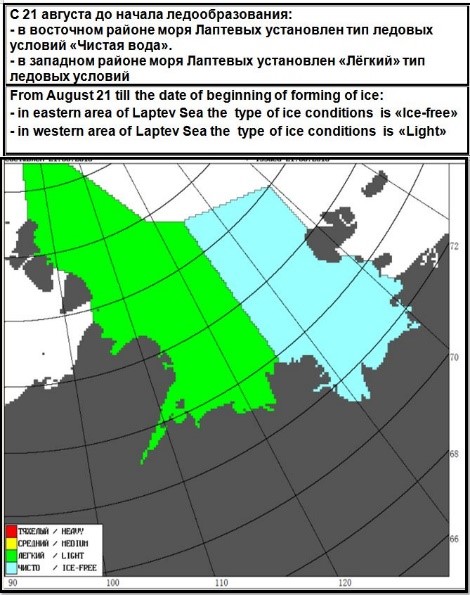 |
Ice conditions key |
| East Siberian Sea | ||
27, July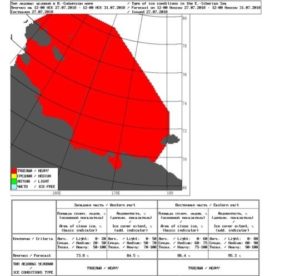 |
24, August |
28, September |
| Chukchi Sea | ||
3, July |
10, August |
since 21, August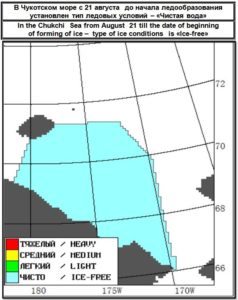 |

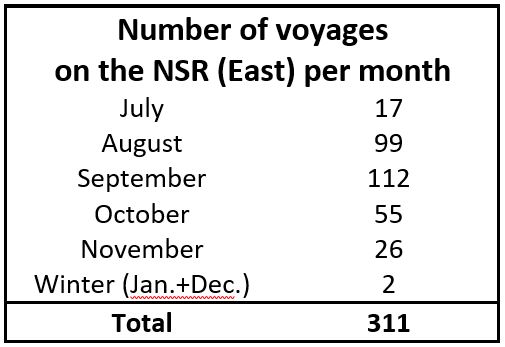 The numbers also show that the activity in the East has inclusions from the winter season. This unusual variety was introduced by LNG carriers, which in January and December went on their first voyages from the shipyards of South Korea to the port of Sabetta.
The numbers also show that the activity in the East has inclusions from the winter season. This unusual variety was introduced by LNG carriers, which in January and December went on their first voyages from the shipyards of South Korea to the port of Sabetta.
As for the directions of voyages, the advantage of Russian ports is evident. This is due to the fact that the NSR primarily serves the internal needs of the country: these are research works, voyages under the Northern Supply Haul project, which owns the largest number of voyages in the East of the NSR, passenger trips, and the work of the icebreaker fleet. However, there are several trips to the Asian ports. Look at the figures:
Number of voyages from or to the East via the NSR
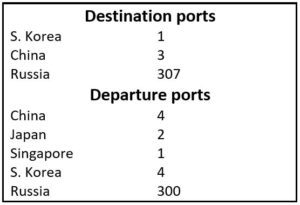
The interesting fact here is that all the voyages from or to Asian ports are belonged to LNG carries, which connect China, Japan, South Korea and Singapore with Sabetta via the NSR.
The main activity was between ports and locations situated on the Chukchi Peninsula, in Siberian rivers, islands of the East Siberian and the Chukchi Seas and Far East territories.
Among the most popular destinations here is Pevek port. It is the biggest port on the Chukchi Peninsula. The cargo turnover of this port is 250 th tons per year. Main activities nearby the port are development of “Kupol” (combination underground and open pit gold and silver mine), “Dvoynoye” (approved reserves of gold are 37 tons, silver – 94 tons) and “Mayskoe” (the mine has estimated reserves of 7.2 million oz of gold) fields. An important factor in the future development of the port and the region will be the development of the “Shtokverka” and “Peschanka” fields. Exploration of oil and gas reserves of the coastal shelf zone may lead to the creation of an oil and gas complex with a transport terminal on the basis of the Pevek sea port. (https://go-pevek.ru) One more important infrastructure object will be placed in Pevek is floating nuclear power station, Akademik Lomonosov.
Zelemyy Mys is located on the right bank of the Kolyma River, 130 km from its mouth. The port was created in the second half of the 50s of the last century, when it became necessary to create a port in connection with the discovery and the beginning of the development of large deposits of tin and gold along the Kolyma. Today the port serves consignees in the Kolyma river basin. It works seasonally: sea navigation begins in early July and ends in early October. The port’s cargo turnover is currently tens of thousands of tons per year (oil products, general cargo). There is a transshipment of cargoes from river type ships to sea type, and vice versa in Zelenyy Mys.
Along the Chukchi Peninsula coast several small settlements get vital goods (primarily food and petroleum products) on the eve of the winter season by sea via the NSR under the project Northern Supply Haul: Leningradskiy, Billings, Mys Shmidta, Neshkan, Enurmino, Inchoun, Uelen, Lavrentiya and many others.
East NSR has a passenger direction: it is a cruise to Wrangel Island. Here, travelers look for the diversity of the Arctic flora and fauna, as well as savage northern nature. This year cruises were made on a vessel with ice class Arc 5 (Professor Khromov).
Research activity
The summer season is also time for research activities. This year such big science enterprises as Russian Academy of Sciences, Arctic and Antarctic Research Institute, Hydrographic Enterprise, Roshidromet, and other carried out research works in the Laptev, East Siberian and Chukchi Seas.
Among the research vessels is Mikhail Somov which is used to supply Russian scientific expeditions in the Arctic, to deliver personnel, equipment and supplies to research stations, as well as to conduct scientific research.
Akademik Treshnikov research vessel took part in Russian-American-German expedition “Arctic-2018”, the main focus of the research was on identifying the causes of the modern retreat of sea ice, the mechanisms of formation of water masses, and many others.
Nikolay Trubyatchinskiy lowered the magnetometer to perform magnetic survey at North Wrangel license area (located in the East Siberian and Chukchi Seas).
Altogether 7 vessels conducted scientific research, making 22 voyages to their work areas and to home ports.
Thus, despite the rather short summer season, there was rich shipping activity in the Eastern part of the Northern Sea Route. There were 311 voyages, 2 of them were in the winter navigation period and 309 in the summer period. The most active were August and September. A third part of all activity was carried out by the river-sea class vessels. International voyages were made only by LNG carriers. There was research and tourism work. Also in the east, icebreakers carried out their support activities.
* Transit voyages were excluded from the calculations. Reporting date for the formation of lists – date of the vessel’s exit from the NSR.



